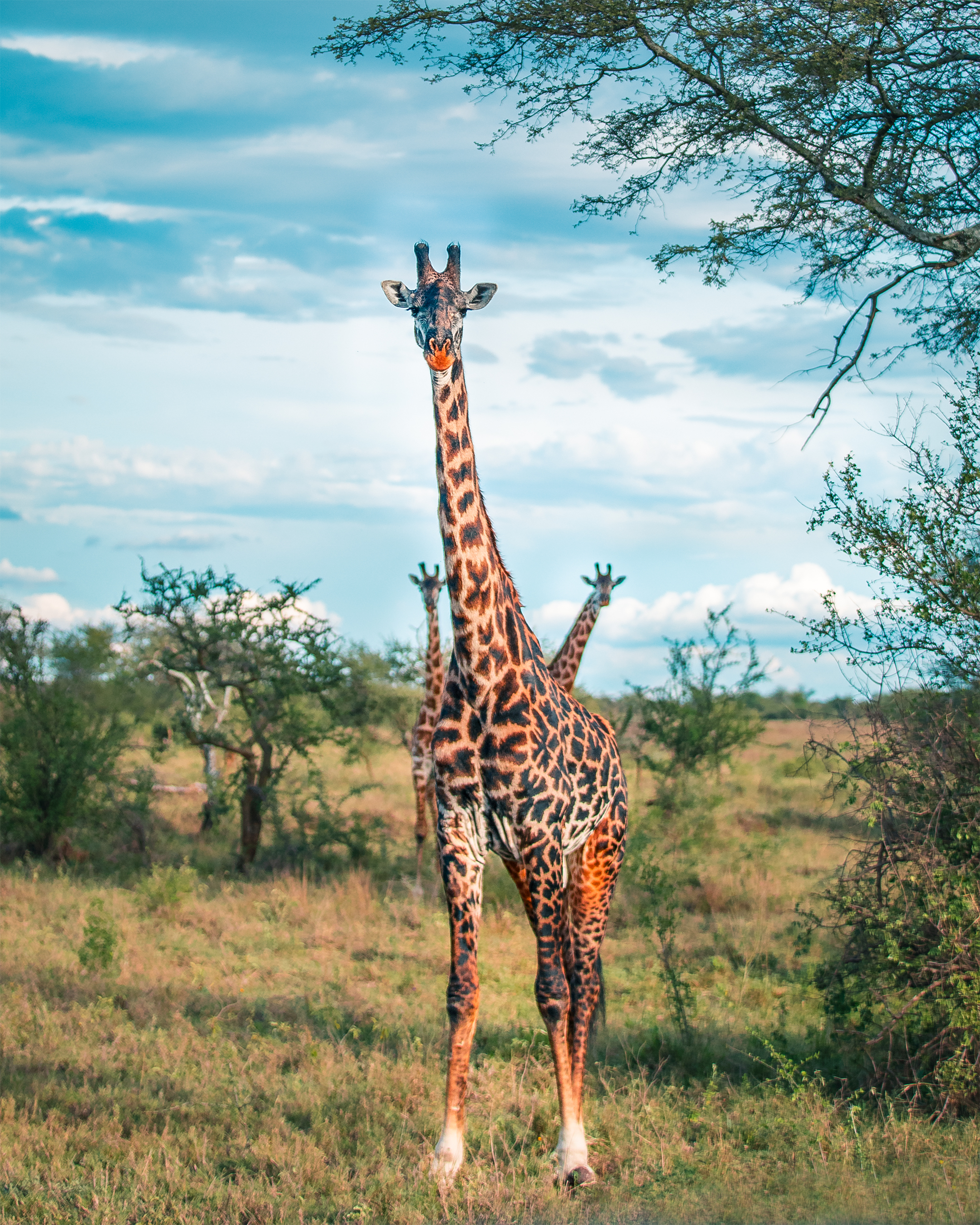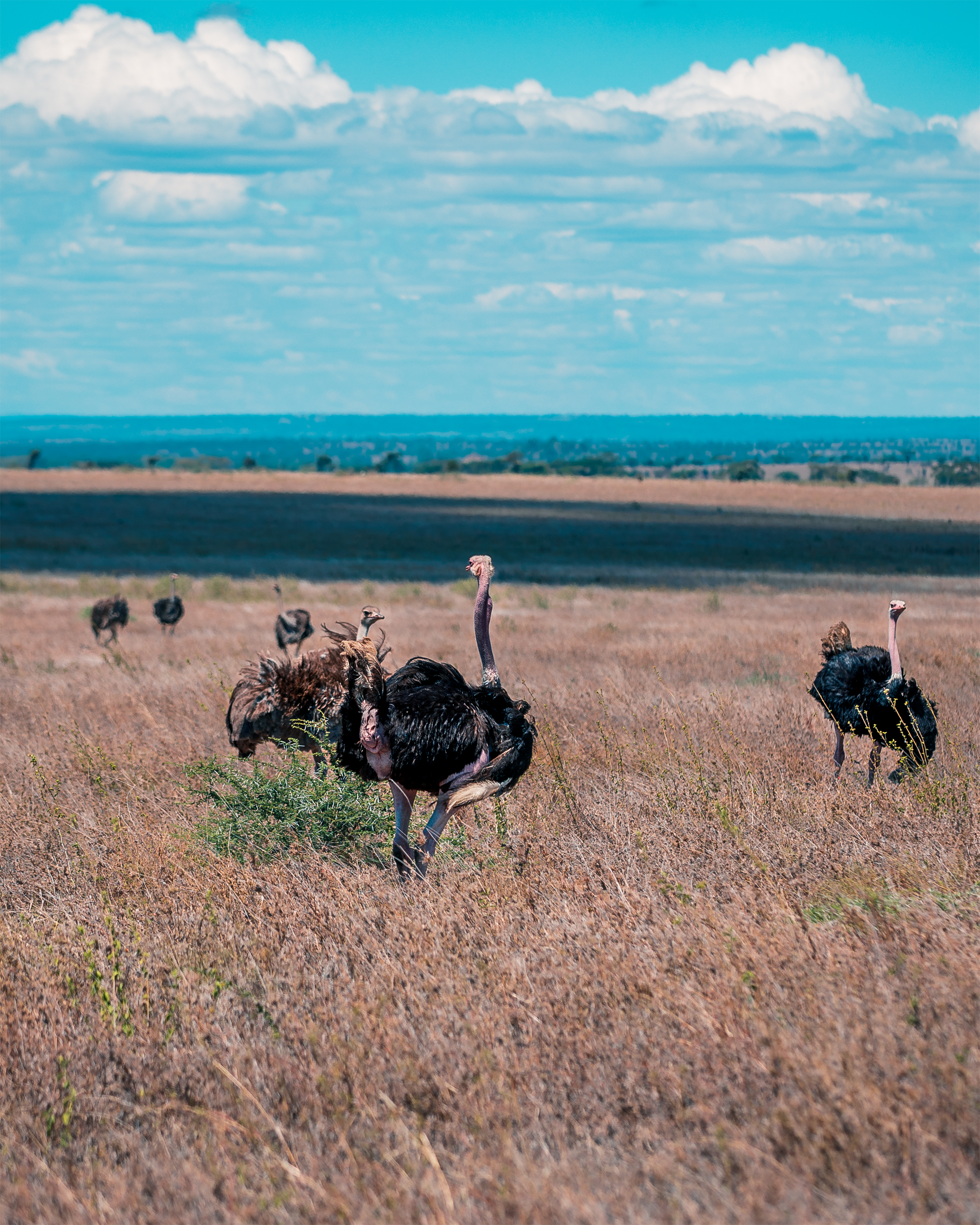- Serengeti National Park
The Serengeti National Park is a large national park in northern Tanzania that stretches over 14,763 km2 (5,700 sq mi).It is located in eastern Mara Region and northeastern Simiyu Region and contains over 1,500,000 hectares (3,700,000 acres) of virgin savanna. The park was established in 1940.
The Serengeti is well known for the largest annual animal migration in the world of over 1.5 million blue wildebeest and 250,000 zebra along with smaller herds of Thomson’s gazelle and eland. The national park is also home to the largest lion population in Africa. It is under threat from deforestation, population growth and ranching.
The name “Serengeti” is an approximation of the word siringet used by the Maasai people for the area, which means “the place where the land runs on forever”
In 1930, an area of 2,286 square kilometers (883 sq mi) was designated as a game reserve in southern and eastern Serengeti. In the 1930s, the government of Tanganyika established a system of national parks compliant with the Convention Relative to the Preservation of Fauna and Flora in their Natural State. The area became a national park in 1940. It was granted strict protection in 1948 when the Serengeti National Park Board of Trustees was formed to administer the national park. The government restricted the movements of the resident Maasai people, and the park boundaries were finalized in 1951. In 1959, an area of 8,300 km2 (3,200 sq mi) was split off in the eastern part of the national park and re-established as Ngorongoro Conservation Area intended to accommodate the traditional land use interests of the Maasai people in a multiple land use area. In 1981, the Serengeti National Park covered 12,950 km2 (5,000 sq mi), which was less than half of the Serengeti.
The Serengeti gained fame after Bernhard Grzimek and his son Michael produced a book and documentary titled Serengeti Shall Not Die in 1959.
Serengeti National Park forms a Lion Conservation Unit since 2005 together with Maasai Mara National Reserve. More than 3,000 lions live in this ecosystem. The population density of the African leopard is estimated at 5.41 individuals per 100 km2 (39 sq mi) in the dry season.
African bush elephant herds recovered from a population low in the 1980s caused by poaching, and numbered over 5,000 individuals by 2014. The African buffalo population declined between 1976 and 1996 due to poaching, but increased to 28,524 individuals by 2008. The black rhinoceros population was reduced to about 10 individuals in the 1980s due to poaching, and fewer than 70 individuals survive in the park today. Rhinos mostly browse on grasses, woody Indigofera, Acacia and Crotalaria forbs and shrubs.
Other mammal carnivores include the Cheetah, about 3,500 spotted hyena, Black-backed jackal, African golden wolf, honey badger, striped hyena, caracal, serval, banded mongoose, and two species of otters.[citation needed] The African wild dog was reintroduced to the area in 2012 after disappearing in 1991. Other mammals include hippopotamus, common warthog, aardvark, aardwolf, African wildcat, African civet, common genet, zorilla, african striped weasel, bat-eared fox, ground pangolin, crested porcupine, three species of hyraxes and cape hare. Primates such as yellow and olive baboons, patas monkeys, and vervet monkey, mantled guereza are also seen in the gallery forests of the Grumeti River.
Reptiles include Nile crocodile, leopard tortoise, serrated hinged terrapin, rainbow agama, Nile monitor, Jackson’s chameleon, African python, black mamba, black-necked spitting cobra, and puff adder.
More than 500 bird species can be seen such as Masai ostrich, secretarybird, kori bustards, helmeted guineafowls, Grey-breasted spurfowl, blacksmith lapwing, african collared dove, red-billed buffalo weaver, southern ground hornbill, crowned cranes, sacred ibis, cattle egrets, black herons, knob-billed ducks, saddle-billed storks, white stork, goliath herons, marabou storks, yellow-billed stork, spotted thick-knees, lesser flamingo, shoebills, abdim’s stork, hamerkops, hadada ibis, african fish eagles, pink-backed pelicans, tanzanian red-billed hornbill, martial eagles, egyptian geese, lovebirds, spur-winged geese, oxpeckers, and many species of vultures.
Great migration
The great migration is the world’s longest overland migration. The complete migration route is around 800 km (500 mi). South of this migration route covers the Ngorongoro Conservation Area where around half a million Wildebeest are born between January and March. By March, at the beginning of the dry season, roughly 1.5 million and 250,000 zebras start to migrate heading north towards Maasai Mara in Kenya. Common eland, plains zebra, and Thomson’s gazelle join the wildebeest. In April and May, the migrating herds pass through the Western Corridor. To get to the Maasai Mara, the herds have to cross the Grumeti and Mara Rivers where around 3,000 crocodiles lie in wait. For every wildebeest captured by the crocodiles, 50 drown. When the dry season ends in late October, the migrating herds start to head back south. Around 250,000 wildebeests and 30,000 plains zebras die annually from drowning, predation, exhaustion, thirst, or disease.



